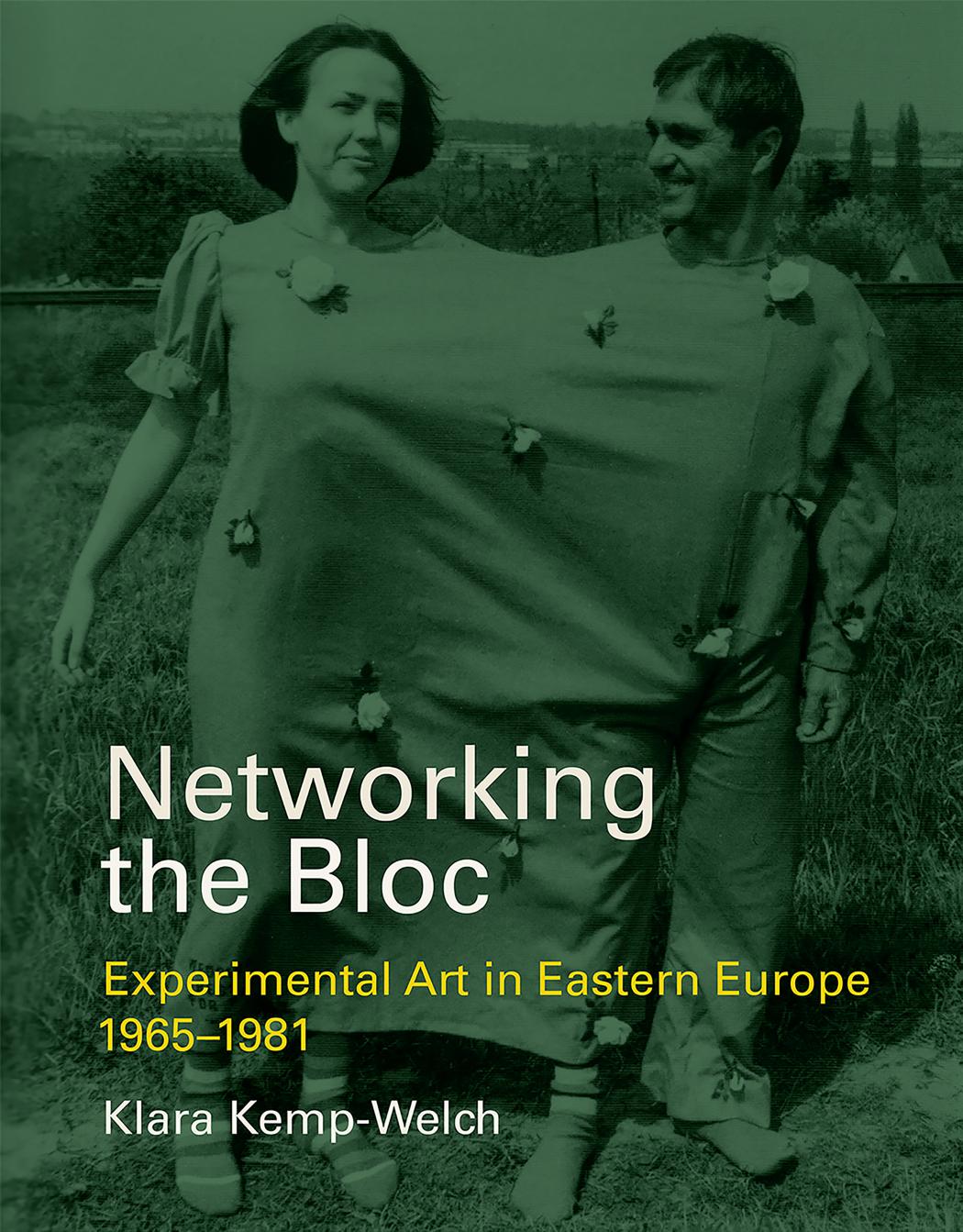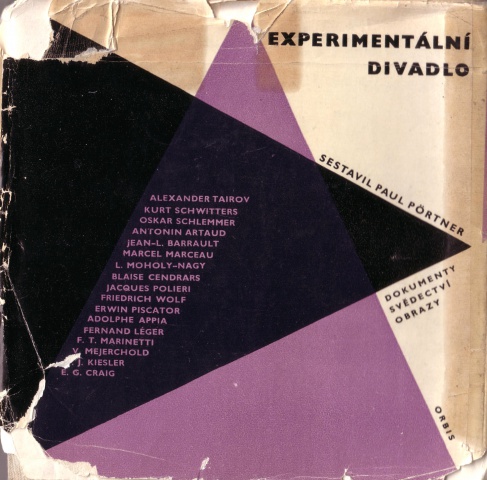Klara Kemp-Welch: Networking the Bloc: Experimental Art in Eastern Europe 1965-1981 (2019)
Filed under book | Tags: · 1960s, 1970s, art history, avant-garde, central europe, cold war, collaboration, community, conceptual art, documentation, east-central europe, eastern europe, experimental art, language, mail art, neo-avant-garde, networks, performance art

“Throughout the 1970s, a network of artists emerged to bridge the East-West divide, and the no less rigid divides between the countries of the Eastern bloc. Originating with a series of creative initiatives by artists, art historians, and critics and centered in places like Budapest, Poznań, and Prague, this experimental dialogue involved Western participation but is today largely forgotten in the West. In Networking the Bloc, Klara Kemp-Welch vividly recaptures this lost chapter of art history, documenting an elaborate web of artistic connectivity that came about through a series of personal encounters, pioneering dialogues, collaborative projects, and cultural exchanges. Countering the conventional Cold War narrative of Eastern bloc isolation, Kemp-Welch shows how artistic ideas were relayed among like-minded artists across ideological boundaries and national frontiers.
Much of the work created was collaborative, and personal encounters were at its heart. Drawing on archival documents and interviews with participants, Kemp-Welch focuses on the exchanges and projects themselves rather than the personalities involved. Each of the projects she examines relied for its realization on a network of contributors. She looks first at the mobilization of the network, from 1964 to 1972, exploring five pioneering cases: a friendship between a Slovak artist and a French critic, an artistic credo, an exhibition, a conceptual proposition, and a book. She then charts a series of way stations for experimental art from the Soviet bloc between 1972 and 1976—points of distribution between studios, private homes, galleries, and certain cities. Finally, she investigates convergences—a succession of shared exhibitions and events in the second half of the 1970s in locations ranging from Prague to Milan to Moscow. Networking the Bloc, Kemp-Welch invites us to rethink the art of the late Cold War period from Eastern European perspectives.”
Publisher MIT Press, 2019
ISBN 9780262038300, 0262038307
xi+468 pages
Reviews: Cristian Nae (ARTMargins, 2019), Denisa Tomkova (H-Net, 2020), Henry Meyric Hughes (Critique d’art, 2020).
PDF (17 MB)
Comment (0)Interdisciplinary Science Reviews 42(1-2): The Experimental Generation (2017)
Filed under journal | Tags: · 1950s, 1960s, art and science, art history, experimental art, technology, united kingdom

“This special double issue of ISR came out of the conference The experimental generation: networks of interdisciplinary praxis in post war British art (1950–1970) we organized together in 2014, exploring an apparent convergence of interest in art and science around the notion of social responsibility in the 1960s. …
It is rarely recognized that Cambridge was something of a hotbed of interdisciplinary exploration in the 1960s. Within this issue we seek to bring some of the leading figures behind this into the foreground, from the Language Research Unit led by Margaret Masterman to the Centre for Land Use and Built Form Studies created by Leslie Martin in the Architecture Department. Cambridge was, after all, where C.P. Snow (re)ignited the ‘Two Cultures’ debate in 1959; where two key figures in cybernetics and systems theory, Gordon Pask and Robin McKinnon-Wood, met as undergraduates, founded their company ‘System Research’ and developed their first early computers. Ian Sommerville, the precocious mathematician who invented the ‘Dreamachine’ with Bryon Gysin was an undergraduate at Trinity College when he invited Gustav Metzger to give his first public lecture/demonstration on Auto-Destructive Art for the Heretics Society in 1960. In 1964, St Catharine’s College, Cambridge, played host to the ‘First International Exhibition of Concrete, Kinetic and Phonic Poetry’ initiated by a young academic in the English department, Michael Weaver who gathered together over 60 works by poets and artists from 14 countries for a week’s exhibition in a Cambridge college. He worked closely with Reg Gadney, Philip Steadman and Stephen Bann who co-edited a formative issue of IMAGE magazine, on Kinetic Art: Concrete Poetry in November 1964. Steadman, Weaver and Bann went on to launch Form (1966–1969).
As a founder member of the Cambridge University Artists Group, Gadney was instrumental in spreading knowledge of Kinetic Art methods and techniques through articles in the student magazine Granta as well as the London Magazine. In 1965 Metzger was invited back to Cambridge to deliver his ‘Chemical Revolution in Art’ lecture attended by Bann, Gadney and Steadman. In his article for this journal Professor Stephen Bann looks back at the art and ideas that informed his book Experimental Painting, published in 1970, which took developments in art of the previous decade as its subject.
This issue spotlights a period that is still within living memory, and still reverberates today. In encouraging such a diversity of articles we have followed our instincts as curators rather than historians. We have gathered together a constellation of voices, from pioneers to emerging scholars, in order to encourage and facilitate unanticipated connections.” (from the Introduction)
Edited by Bronać Ferran and Elizabeth Fisher
Publisher Institute of Materials, Minerals & Mining, London, 2017
ISSN 0308-0188
224 pages
PDF (33 MB)
Comment (0)Paul Pörtner (ed.): Experimentální divadlo: přehled, dokumenty, kresby, fotografie (1960/1965) [Czech]
Filed under book | Tags: · art history, avant-garde, experimental art, futurism, history of theatre, theatre

A history and documents of the experimental theatre edited in 1960 by the German playwright, novelist and translator.
“Pörtnerova kniha chce ve stručnosti, mnohdy až lapidární zkratkou, seznámit s výsledky nejdůležitějších pokusů, ktoré vznikly z vědomí neomezených možností moderního scénického prostoru a chtějí zbavit divadlo otrocké závislosti na konvenci a stagnaci, vlastní stávajícímu divadlu.
Výsledky pokusů velikých experimentátorů, mezi nimiž nechybí taková jména jako Appia, Craig, Marceau, Piscator, ale i Léger, Moholy-Nagy, Picasso, svítí nadále jako maják do budoucnosti, neboť jen málo impulsů z jejich bohatého odkazu přešlo do praxe současného divadla.
Ačkoli nelze očekávat, že idea ‘totálního divadla’ ožije v celé plnosti jejich představ, zůstává nicméně naděje, že sebevědomí divadla jako svébytného uměleckého druhu zesílí, že experimenty se specificky divadelními prostředky budou vedeny dále, aby se tak z dílčích událostí stala skutečná divadelní událost, ve které spojí experiment formy s novým obsahem.
Kniha může být cenným podnětem v našem soudobém uměnovedném myšlení a má význam i pro historii předválečného divadla, která má právě v této oblasti mnoho neujasněností a bílých míst.” (from the inside flap)
First published as Experiment Theater. Chronik und Dokumente, Arche, Zürich, 1960
Translated by Jan Rak
Publisher Orbis, Prague, 1965
Volume 4 of Monoskop Unlimited Edition series
176 pages
PDF (66 MB, no OCR)
Comment (0)
